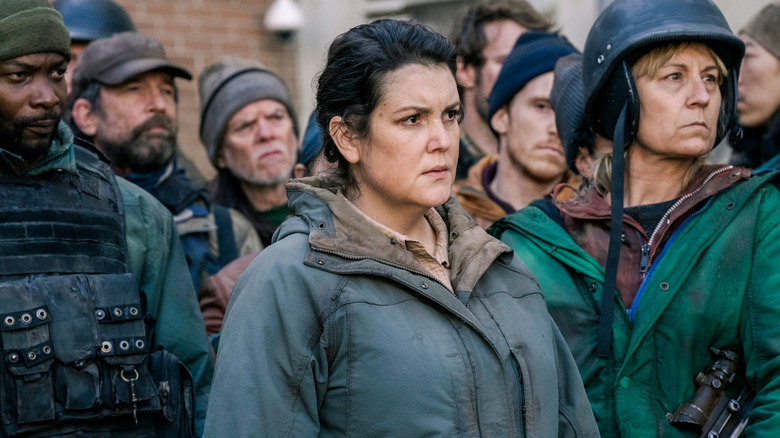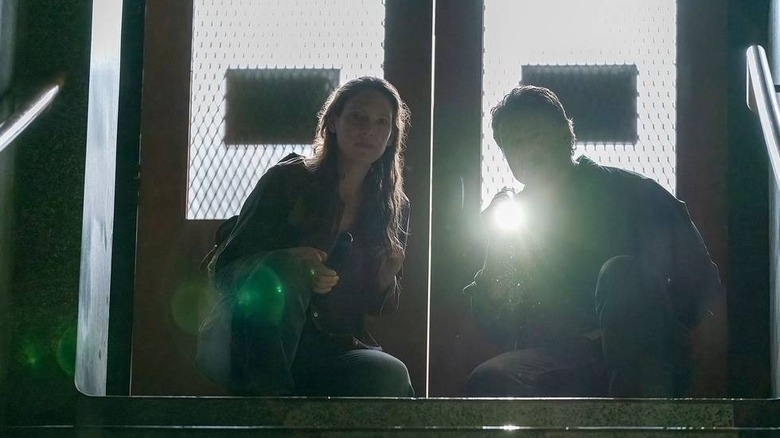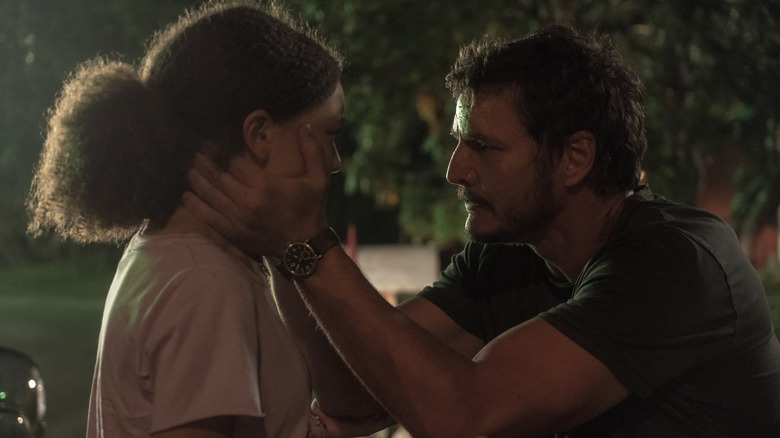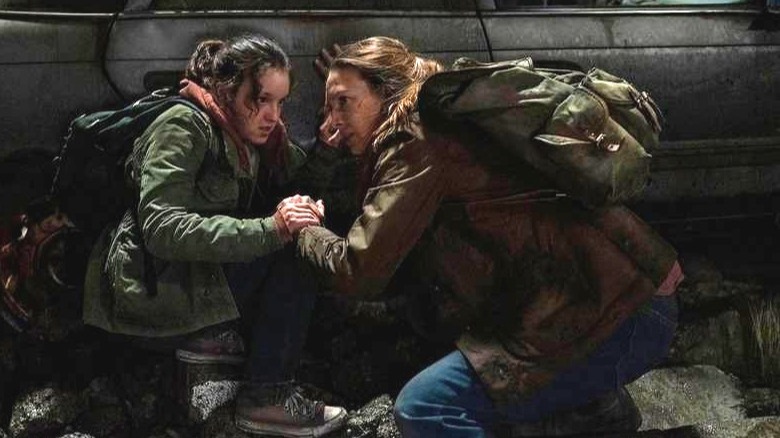HBO's The Last Of Us Is Not Action-Heavy, And That's Okay
This post contains spoilers for "The Last of Us."
After four episodes, HBO's "The Last of Us" has proved to be more than just a faithful retelling of the original video game franchise. Hailing from "Chernobyl" creator Craig Mazin, "The Last of Us" is a great television series that defiantly adheres to the medium instead of trying to recapture the gameplay experience. Although much of the narrative as well as the characters remain the same, the HBO show isn't afraid of switching things up to better serve a small-screen adaptation. And unlike the video game that precedes it, the series is not action-heavy.
As an avid fan of the original video game, it's hard for me to separate "The Last of Us" from the bloody, ultra-violent action players get to enact on their enemies (infected or not). The immersive gameplay is, in fact, arguably synonymous with the experience of getting to know Joel and Ellie during their journey. The television series may give us what we've wanted to see for a long time, but replicating the game's action isn't the show's priority. It's still violent in many instances, but HBO's adaptation of "The Last of Us" has set its eyes on what has always mattered — the characters.
Less action, more development
Since the first episode, "The Last of Us" hasn't felt the need to fill in story gaps with some good old-fashioned head-smashing. After the extended opening featuring Sarah (Nico Parker) during outbreak day, the rest of the pilot remains centered on the post-apocalyptic lives of its main characters. When it seems Joel (Pedro Pascal) and Tess (Anna Torv) are about to encounter a group of bandits in search of a battery, just like in the video game, the show opts instead to skip that part entirely by showcasing the aftermath of a shootout. The first time we see something that feels like the action of the video game is in the second episode, when Joel, Tess, and Ellie (Bella Ramsey) encounter a group of evolved clickers in a climactic fight.
Instead of transitioning from one sequence to the next through action (i.e., gameplay), "The Last of Us" keeps the narrative structure tethered to the restraints of the television format. There is no rush to get to the next bit of violence, either. The third episode revolves around Bill (Nick Offerman) and Frank (Murray Bartlett) falling in love in their infected-free town. The show prioritizes this love story and gives Bill a depth he doesn't have in the game, making him more than just a vehicle to help Joel and Ellie fight the infected. By the fourth episode, things have begun to heat up, with a faction threatening the not-so-safe travels of the main duo. Even as the pace picks up, however, the show keeps its focus on what matters most.
It's always been about them
HBO's "The Last of Us," at its core, is about the relationships formed between Joel, Ellie, and the people they encounter on their journey across the nation. The same is true in the original video game. Any violence that occurred throughout the gameplay came second to the emotional triumphs and tribulations of the characters we grew to adore. Video game adaptations usually falter by either sticking too closely to the exact, surface-level details or straying too far from the heart of the source material. HBO's "The Last of Us" focuses on the familiar character beats that advance the story rather than trying to recreate a video game experience that can't be replicated in its entirety.
The memorable moments between Joel and Ellie, for instance, remain intact. Outside a few obstacles thus far, much of their journey is made up of interactions that slowly bridge the gap in Joel's reluctance to be a surrogate father to Ellie. Some of this is ripped straight out of the game, some of it isn't. And yet, it all feels like "The Last of Us." In both the game and the series, the duo's relationship can't become fully formed without some shared trauma. Both Joel and Ellie finally get their hands dirty in the fourth episode, fighting off a couple of bandits in a gruesome manner. At this point, "The Last of Us" has smartly limited the action to make it more jarring when things inevitably get bloody.
Less means more
The pilot uses the first bit of post-apocalyptic violence to showcase how Joel has changed after two decades. Joel pummeling the FEDRA guard, who he had previously interacted with earlier in the episode, was the right amount of gratuitous violence necessary to sell how violent he can get if need be. In the second episode, Tess' death is just as (if not more) meaningful, despite the fact she doesn't gun down a bunch of bandits. The fourth episode chooses to make the first big shootout a turning point in the story that has more to do with the thematic implications for Joel and Ellie's relationship than providing a neat action scene. HBO's "The Last of Us" is using action in a more intentional manner this time around, removing it from the original story when it doesn't serve a specific purpose.
We're only four episodes into the first season, but it's clear that "The Last of Us" is a passion project for both Craig Mazin and video game co-director Neil Druckmann. Creating a carbon copy of the original experience would have been detrimental to the adaptation, so it's reassuring that the folks most familiar with the essence of the story are handling it. Knowing the events of the original story, the violence will inevitably get ramped up sooner or later. Let's hope that HBO's "The Last of Us," however, continues to not show violence just for the sake of it.
New episodes of "The Last of Us" air on Sundays on HBO and HBO Max.



